How to Help Clients Training for an Obstacle Course Race (Free Guide)
Learning how to guide clients training for an obstacle course race can diversify your client base as a personal trainer. However, it’s key that you have the appropriate knowledge and tools to train these clients effectively. Certain features of personal training software can assist you in this endeavor. Learn how to guide clients training for an obstacle course race and what tools you’ll need in this comprehensive guide.
- Assisting clients in obstacle course race training requires a multifaceted approach that combines strength training, cardiovascular workouts, agility drills, and mental preparation.
- Most obstacle course race training clients will benefit from a diverse training plan that targets not only their physical endurance but also their ability to maneuver through different obstacles.
- Incorporating workout and assessment software can assist in tracking progress, scheduling diverse workouts, and maintaining a balanced training plan, ensuring your clients reach their race goals safely and effectively.
Helping clients prepare for an obstacle course race can offer personal trainers a rewarding way to significantly influence their clients’ fitness journeys.
To help clients training for an obstacle course race effectively, you need not only an understanding of diverse training modalities but also the right tools to manage progress and adjust training plans; that’s where personal training software becomes invaluable. By leveraging the features offered by the best personal training workout software, you can guide clients in their obstacle course race training in a way that maximizes their performance and minimizes injury risk.
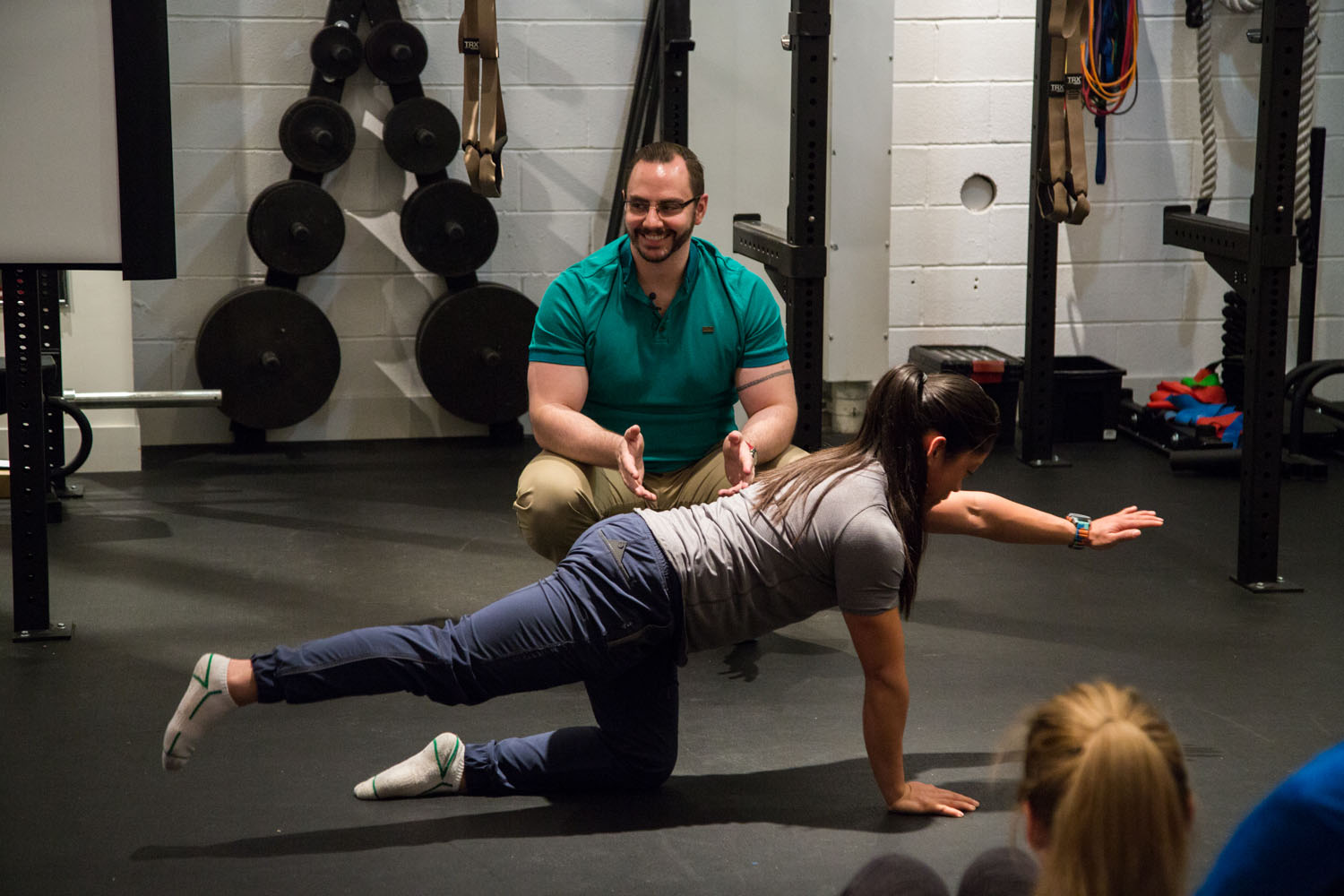
Experience the leading personal training software from Exercise.com by booking a demo today!
The Benefits of Training for an Obstacle Course Race
Obstacle course races (OCR) have gained immense popularity in recent years, attracting individuals of all fitness levels who seek a new and exciting challenge. As a fitness professional, it is important to equip yourself with the knowledge and skills necessary to effectively assist clients in their OCR training journey. This comprehensive guide will delve into the various aspects of helping clients train for an obstacle course race, covering everything from understanding the benefits and challenges of OCR, assessing fitness levels, setting realistic goals, and designing customized training plans. We will also explore the importance of cardiovascular endurance, strength and power, agility and balance, functional training, and overcoming common obstacles.
Additionally, we will discuss nutrition tips, mental preparation strategies, injury prevention techniques, preparing for specific obstacles, utilizing cross-training methods, and tracking progress. Finally, we will touch on the importance of motivating and supporting clients throughout their OCR journey, ensuring they stay on track and achieve their goals.
Participating in an obstacle course race offers numerous benefits for both the body and mind. OCR training involves a combination of cardiovascular exercise, strength training, and functional movements, providing a well-rounded fitness routine. Engaging in these types of training can improve endurance, strength, power, agility, balance, and overall physical fitness. The variety of obstacles in OCR courses also adds an element of excitement and challenge, keeping individuals motivated and engaged in their workouts. Moreover, OCR training can enhance mental resilience, as it requires problem-solving skills and the ability to overcome obstacles both physically and mentally. The camaraderie and sense of accomplishment experienced during OCR events also contribute to improved self-confidence and a positive mindset.
One of the additional benefits of training for an obstacle course race is the opportunity to develop functional strength. Unlike traditional weightlifting exercises that isolate specific muscle groups, OCR training focuses on movements that mimic real-life activities. This type of training helps individuals build strength that can be applied to everyday tasks, such as lifting heavy objects or climbing stairs.
In addition to physical benefits, participating in OCR training can also have a positive impact on mental health. The intense nature of obstacle course races requires individuals to push past their comfort zones and face their fears. This can lead to increased self-confidence and a sense of accomplishment. The mental resilience developed through OCR training can also translate to other areas of life, helping individuals overcome challenges and setbacks with a determined mindset.
Read More:
- How to Help Clients Training for a Spartan Race
- How to Help Clients Training for a Tough Mudder
- How to Help Clients Training for a Trail Race
Understanding the Challenges of an Obstacle Course Race
OCR competitions present unique challenges that require specialized training. Course layouts vary, and obstacles may include crawling under barbed wire, climbing walls, carrying heavy objects, traversing monkey bars, and conquering mud pits, among others. It is crucial to understand the physical demands these obstacles place on the body, as well as their potential impact on joints, muscles, and overall endurance. Additionally, OCR events usually encompass various terrains, such as trails, hills, and uneven surfaces, making it essential to train for these specific conditions. Being aware of the challenges involved in OCR training will allow you to better guide your clients in their preparation and ensure they are adequately prepared for race day.
Furthermore, mental preparation is also key in tackling obstacle course races. These races often require participants to push through physical discomfort, face fears, and maintain focus and determination throughout the course. Developing mental resilience and strategies to overcome obstacles can greatly enhance performance in OCR events. Incorporating mental training techniques, such as visualization and positive self-talk, into your clients’ training programs can help them develop the mental fortitude needed to excel in these challenging races.
Assessing Your Client’s Fitness Level for OCR Training
Prior to designing a training plan, it is crucial to assess your client’s current fitness level. This assessment should include evaluating their cardiovascular endurance, overall strength, flexibility, agility, and balance. Conducting a comprehensive fitness assessment will help identify any areas of weakness and determine a baseline from which to develop customized training protocols. Various tests, such as running assessments, strength exercises, and balance drills, can be utilized to assess your client’s capabilities. This information will enable you to tailor their training program to meet their individual needs and goals, maximizing their OCR training progress.
Setting Realistic Goals for OCR Training
Goal setting is essential in OCR training to provide clients with direction and motivation. Ensure that the goals you and your clients set are SMART: specific, measurable, achievable, relevant, and time-bound. Collaborate with your clients to establish both short-term and long-term goals, such as completing a specific race, improving time on certain obstacles, or achieving a certain level of overall fitness. By breaking down the larger goal of completing an OCR race into smaller, manageable milestones, clients will experience a sense of accomplishment at each stage, increasing their motivation to keep pushing forward.
Designing a Customized Training Plan for OCR
Once you have assessed your client’s fitness level and determined their goals, it’s time to design a customized training plan for OCR. Consider incorporating a combination of cardiovascular exercises, strength training, functional movements, and specific obstacle practice. These components should be strategically integrated to address your client’s weaknesses and progress them towards their goals. Periodization, which involves dividing training into phases, can be implemented to ensure clients experience gradual improvements while minimizing the risk of overtraining or injuries. Create a detailed plan outlining the frequency, duration, and intensity of workouts, as well as any necessary modifications or progressions. Regularly reassess and adjust the training plan as needed to accommodate your client’s evolving capabilities.
The Importance of Cardiovascular Endurance in OCR Training
Endurance is a vital component of OCR training, as races require sustained effort over varied terrains and obstacles. Implementing cardio exercises such as running, biking, swimming, and rowing will enhance your client’s cardiovascular fitness, enabling them to sustain prolonged efforts during races. Integrate both long, steady-state cardio workouts to promote aerobic capacity and interval training sessions to improve speed and anaerobic capacity. Additionally, consider incorporating hill or trail running to mimic the course conditions and prepare clients for specific challenges they are likely to face. Consistent cardiovascular training will significantly contribute to improved overall performance and race-day success.
Building Strength and Power for OCR Success
Strength and power are crucial for overcoming the physical demands of OCR. Incorporate resistance training exercises that target major muscle groups, such as squats, deadlifts, lunges, pull-ups, and push-ups. These compound movements will develop overall strength and power, allowing clients to conquer obstacles with greater ease. Implement both bodyweight exercises and weighted exercises to build strength progressively. Additionally, plyometric exercises, such as box jumps and medicine ball slams, can be added to enhance explosive power. Aim for a balanced approach, targeting both upper and lower body muscles, to ensure clients have the necessary strength and power to excel in OCR events.
Developing Agility and Balance for OCR Competitions
Agility and balance are critical skills for navigating the technical aspects of OCR courses. Implement exercises that challenge these components of fitness, such as ladder drills, cone drills, single-leg exercises, and yoga or Pilates-based movements. Training sessions can also incorporate obstacle-specific drills or equipment, such as balance boards or slacklines, to simulate the challenges clients will face. By developing agility and balance, clients will improve their coordination and stability, allowing them to tackle obstacles with precision and confidence.
Incorporating Functional Training into OCR Workouts
Functional training is paramount in OCR as it mimics real-life movements and prepares clients for the dynamic challenges of the race. Integrate exercises that involve multi-joint movements and engage multiple muscles simultaneously. Utilize equipment such as kettlebells, battle ropes, sandbags, or suspension trainers to add variety and challenge to workouts. These exercises will improve overall strength, stability, and endurance, while also enhancing clients’ ability to perform everyday tasks and overcome obstacle-specific demands. Implementing functional training exercises will ensure your clients are well-prepared for the dynamic and unpredictable nature of OCR courses.
Overcoming Common Obstacles in OCR Training
Throughout the OCR training journey, clients may encounter various obstacles, both physical and mental. Common obstacles may include muscle soreness, injuries, plateaus, or lack of motivation. As a fitness professional, it is essential to provide guidance and support to help clients overcome these challenges. Encourage open communication to address any concerns or issues they may face. Utilize strategies such as modifying workouts, incorporating recovery techniques, providing alternative exercises, or adjusting training intensity as necessary. Additionally, offer motivation and positive reinforcement to keep clients engaged and focused on their goals.
Nutrition Tips for Optimal Performance in OCR Events
Nutrition plays a vital role in OCR training and performance. Encourage clients to prioritize a well-balanced diet consisting of lean proteins, whole grains, fruits, vegetables, and healthy fats. Ensure they consume adequate calories to support training and recovery. Additionally, emphasize the importance of proper hydration, particularly during training sessions and races. Educate clients about fueling strategies before, during, and after workouts or races to optimize energy levels and promote muscle recovery. Remind them to experiment with different nutrition approaches during training to identify what works best for their individual needs.
Mental Preparation Strategies for OCR Races
Mental toughness is key to overcoming the physical and mental challenges of OCR races. Encourage clients to incorporate mental preparation strategies into their training routines, such as visualization exercises, positive self-talk, goal setting, and mindfulness techniques. Practice scenarios that simulate race day conditions and encourage clients to develop mental resilience by pushing through fatigue, self-doubt, and fear. By training the mind alongside the body, clients will be better equipped to handle the stress and demands of OCR events.
Injury Prevention Techniques for OCR Training
Injury prevention should be a top priority in OCR training due to the physical demands and high-impact nature of the sport. Prioritize warm-up and cool-down routines, ensuring clients perform dynamic stretches and mobility exercises to prepare their bodies for the training session and aid recovery. Emphasize the importance of proper body mechanics and technique during exercises to minimize the risk of injury. Encourage clients to listen to their bodies and not push through pain. Finally, educate clients on the importance of rest and recovery, as well as incorporating mobility and foam rolling exercises to reduce muscle soreness and prevent imbalances or overuse injuries.
Preparing Clients for Specific Obstacles in OCR Courses
OCR courses often feature unique obstacles that require specific training and technique. Research the specific challenges your clients may encounter in their chosen race and create training modules that simulate those obstacles. By familiarizing clients with the movements and skills required to conquer each obstacle, they will feel more confident and prepared on race day. Dedicate training sessions to practicing obstacle-specific techniques and drills, and provide feedback and guidance to help clients master the necessary skills, promoting efficient and successful obstacle navigation.
Utilizing Cross-Training Methods to Enhance OCR Performance
Cross-training incorporates a variety of exercises and activities to improve overall fitness and performance. Introduce activities such as swimming, cycling, rowing, or trail running to supplement traditional OCR training. These alternative activities target different muscle groups, provide cardiovascular variety, and reduce the risk of overuse injuries. Integrating cross-training techniques will contribute to a well-rounded fitness routine and enhance clients’ OCR performance by improving their overall fitness and athleticism.
Tracking Progress and Making Adjustments in OCR Training Plans
Regularly monitor and track clients’ progress throughout their OCR training journey. Utilize fitness assessments, time trials, and progress photos to measure improvements and identify areas that require additional focus. Consider implementing technology such as fitness trackers or training apps to monitor training volume, intensity, and recovery. By reviewing and analyzing progress data, you can make informed adjustments to training plans, ensuring your clients continue progressing towards their goals. Regularly communicate with clients to discuss their experiences, challenges, and achievements, and make any necessary modifications to training techniques or protocols.
Motivating and Supporting Clients on Their OCR Journey
Supporting and motivating clients is crucial for their success in OCR training. Encourage a supportive training environment where clients feel comfortable sharing their struggles and celebrating their successes. Provide regular feedback and praise to acknowledge their progress and efforts. Establish open lines of communication to address any concerns or challenges they may face, and offer solutions or modifications to keep them on track. Show genuine enthusiasm and passion for their OCR journey, striving to create a positive and empowering experience. By fostering a supportive and motivating atmosphere, clients will find the necessary drive and encouragement to conquer their OCR goals.
How do you train for obstacle course races?
Training for obstacle course races (OCRs) involves a combination of cardiovascular fitness, strength training, agility, and mental preparation. Incorporate running or jogging, strength exercises like pull-ups and squats, agility drills, and obstacle-specific training to prepare for the challenges you’ll face in OCRs.
How can I improve my obstacle course race time?
To improve your obstacle course race time, focus on building your overall fitness and developing specific skills needed for OCRs. Train for both cardiovascular endurance and strength, practice obstacle-specific techniques, work on your running speed and agility, and mentally prepare for the challenges.
What resources do you need for an obstacle course?
For an obstacle course, you may need appropriate clothing and footwear that provide comfort, flexibility, and good traction. Other resources may include access to training facilities or outdoor spaces with obstacles to practice on, workout equipment for strength training, and online resources or guides for obstacle-specific training techniques.
What skills does an obstacle course develop?
Obstacle courses develop a range of skills, including cardiovascular endurance, muscular strength and endurance, agility, balance, coordination, and mental resilience. They require a combination of running, climbing, crawling, jumping, lifting, and navigating through various obstacles, which enhances overall physical fitness and functional abilities.
How long does it take to train for an OCR?
The duration of training for an obstacle course race can vary depending on factors such as your current fitness level, experience, and the specific race distance or difficulty. Generally, a training period of 8-12 weeks is recommended to build the necessary endurance, strength, and skills required for OCRs. However, the timeline can be adjusted based on individual circumstances and goals.
Is obstacle course racing hard?
Obstacle course racing can be physically and mentally challenging, as it combines running with various obstacles that require strength, agility, and problem-solving skills. The difficulty level can vary depending on the race distance, terrain, and the specific obstacles involved. However, with proper training, preparation, and a positive mindset, individuals of different fitness levels can participate and enjoy the experience.
Is CrossFit a good way to train for an obstacle course race?
CrossFit can be an effective training method for obstacle course races due to its focus on functional movements, high-intensity workouts, and varied training modalities. CrossFit workouts often incorporate strength training, cardiovascular conditioning, and exercises that improve agility and coordination. However, it’s important to supplement CrossFit training with specific obstacle practice and running to fully prepare for the demands of OCRs.
Read More: Top Rated CrossFit Gym Management Software
What exercises should you do to train for an obstacle course race?
To train for an obstacle course race, incorporate a combination of exercises such as running or jogging for cardiovascular endurance, strength exercises like pull-ups, push-ups, squats, and lunges to build overall strength, and functional exercises like burpees, bear crawls, and agility ladder drills to improve coordination and agility. Obstacle-specific training, such as rope climbs, wall climbs, and monkey bars, is also essential.
What stretching should you do to train for an obstacle course race?
Prioritize dynamic stretching as part of your warm-up routine before training or competing in an obstacle course race. Dynamic stretches involve moving through a full range of motion to activate the muscles and prepare them for the physical demands of the race. Focus on stretches that target the major muscle groups involved, such as leg swings, arm circles, lunges with twists, and trunk rotations. Save static stretching for after the race or training session to help with muscle recovery and flexibility.
Use the Best Personal Training Software to Offer a Stellar Client Experience
Training clients for an obstacle course race requires a comprehensive and tailored approach. See how Exercise.com can help.

To learn more about how Exercise.com can help you run your fitness business, book a demo now!
Creating Training Plans for Clients Who Want to Compete in an Obstacle Course Race
Here’s how you can help your clients accomplish their goals by using workout plan creator software to create workout plans, run fitness challenges, offer online workout groups, message clients, and more, all from your very own custom branded fitness apps.
Exercise.com stands out as an all-in-one fitness business management software with comprehensive workout plan sales capabilities. The robust member management, billing & invoicing, and unique fitness assessment tools offer a one-stop solution for fitness business needs. Here’s just some of what you can do with the Exercise.com platform:
Engage with clients via automations.
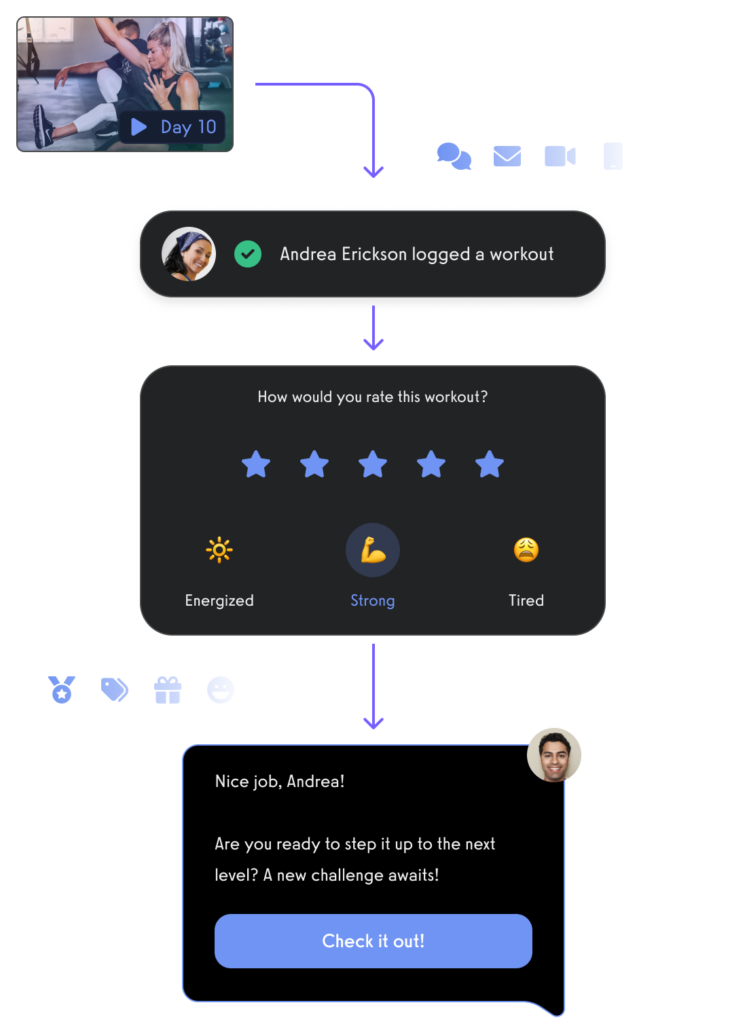
Manage leads with a fitness CRM. Read More: Best CRM Software for Fitness Studios
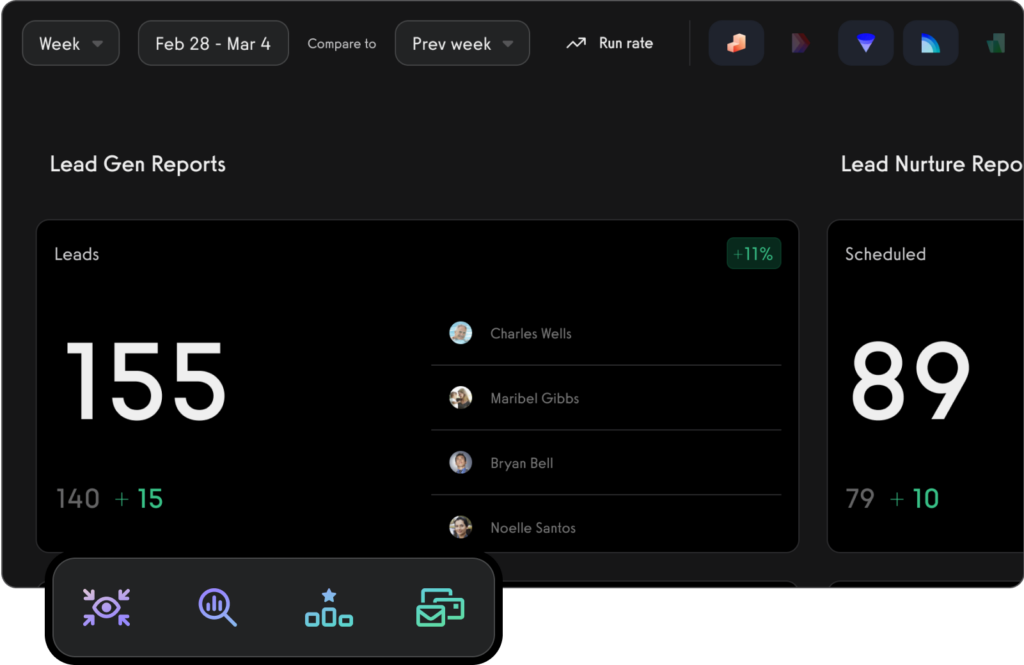
Create and send fitness assessments with ease.
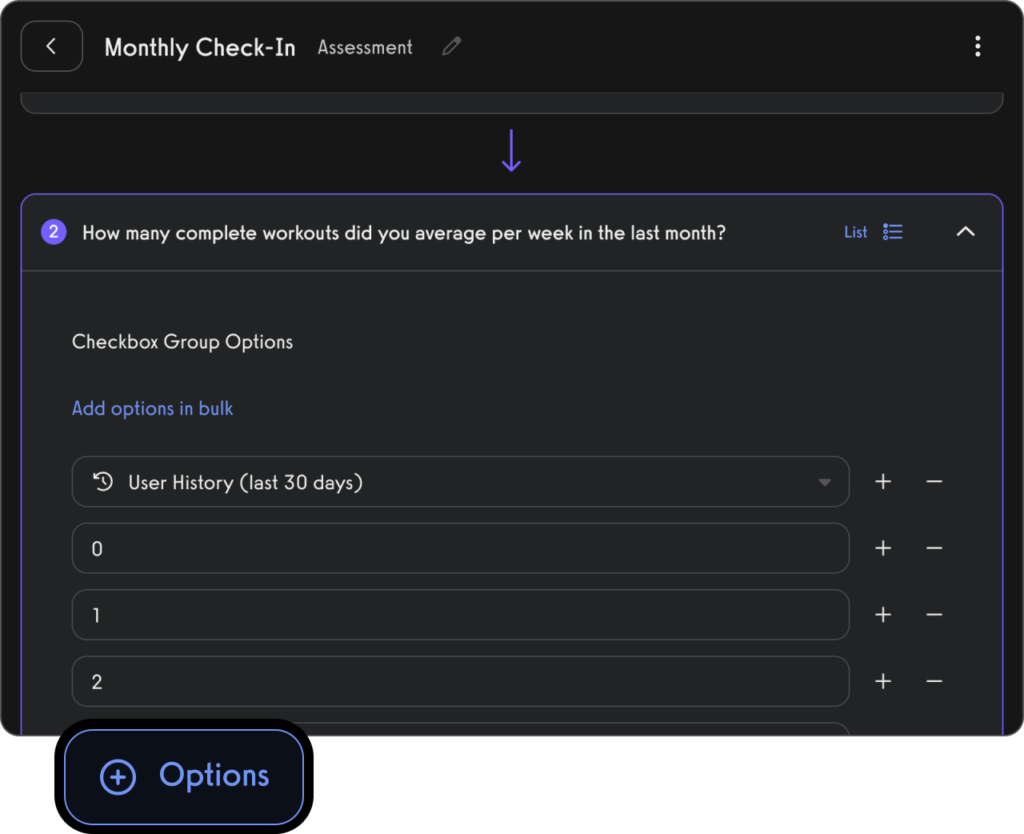
Use fitness habit tracking to inspire and motivate personal training clients (in-person and remote).

Use fitness progress photos to engage with clients.
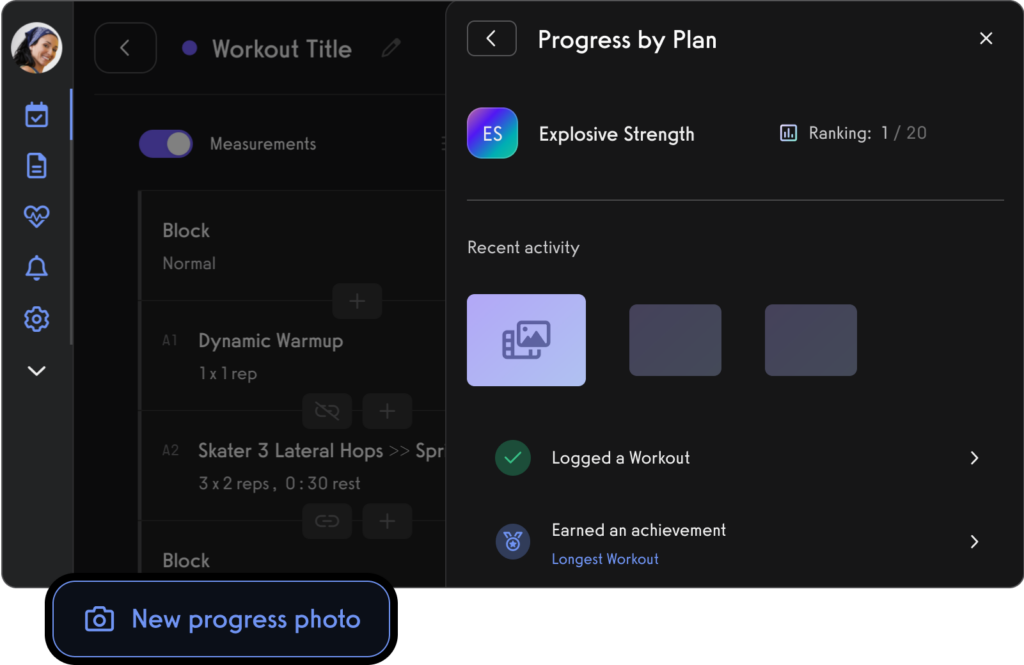
Use fitness leaderboards to track performance and inspire healthy competition.
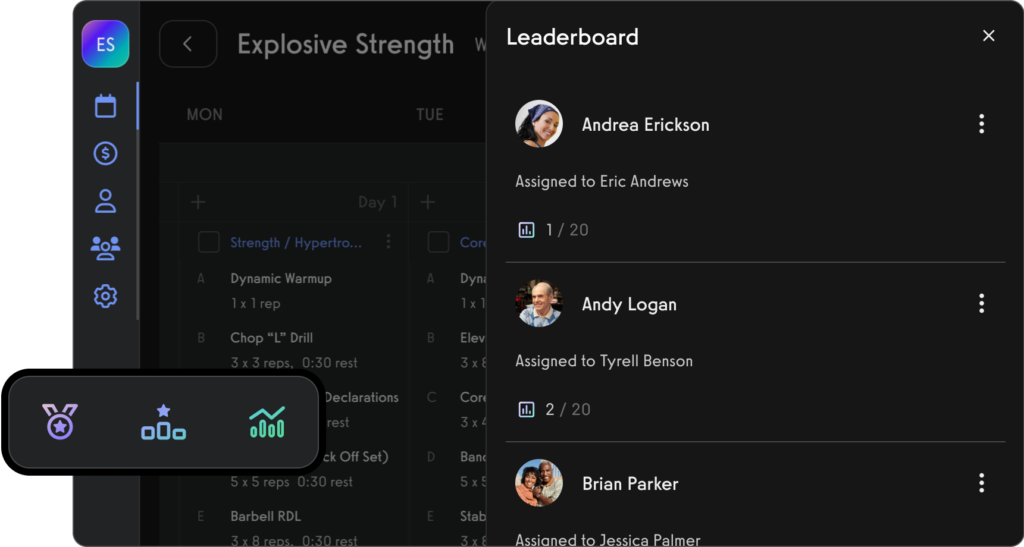
Use the exercise demonstration video library or create your own custom exercise demonstration videos.

Create workout plans for parents and dependents, teams and more.

Manage personal training clients with ease.

Book appointments for clients (Read More: Best Gym Booking Software)

Create classes and fitness groups

Manage fitness challenges (Read More: 100+ Fitness Challenge Ideas)
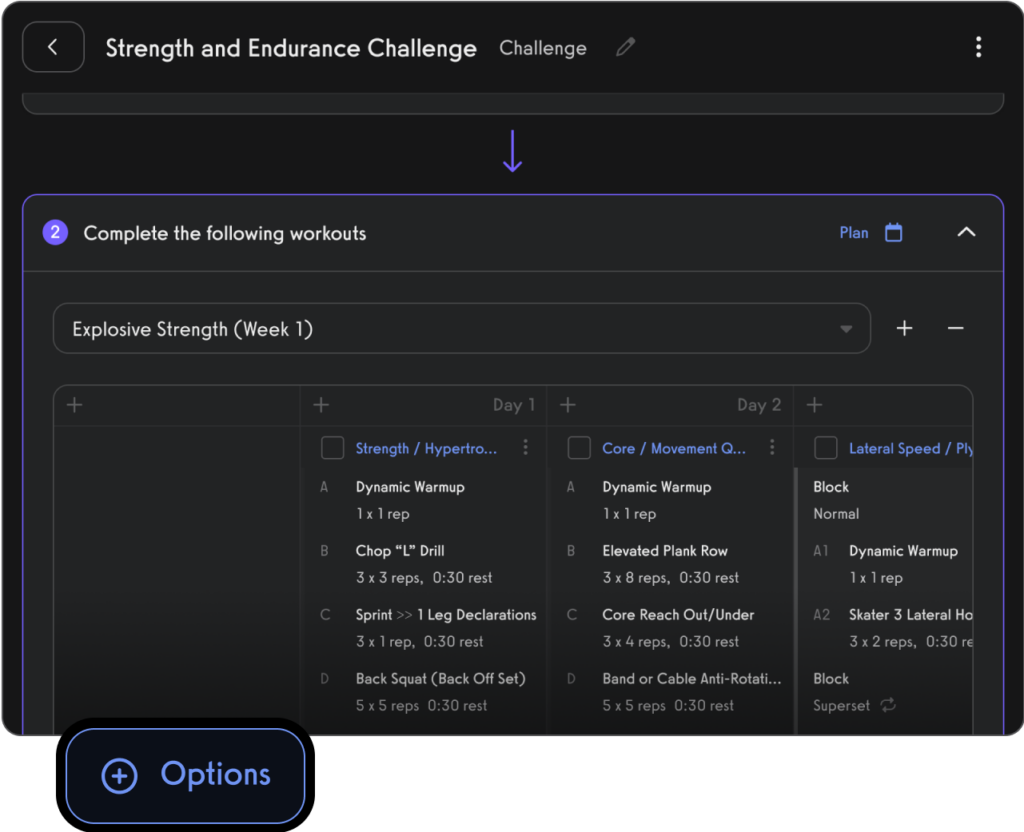
Process payments for open gym, classes, and personal training.

Communicate with gym members, athletes, team members, personal training clients, class members, parents, and dependents via SMS, email, and in-app push notification.
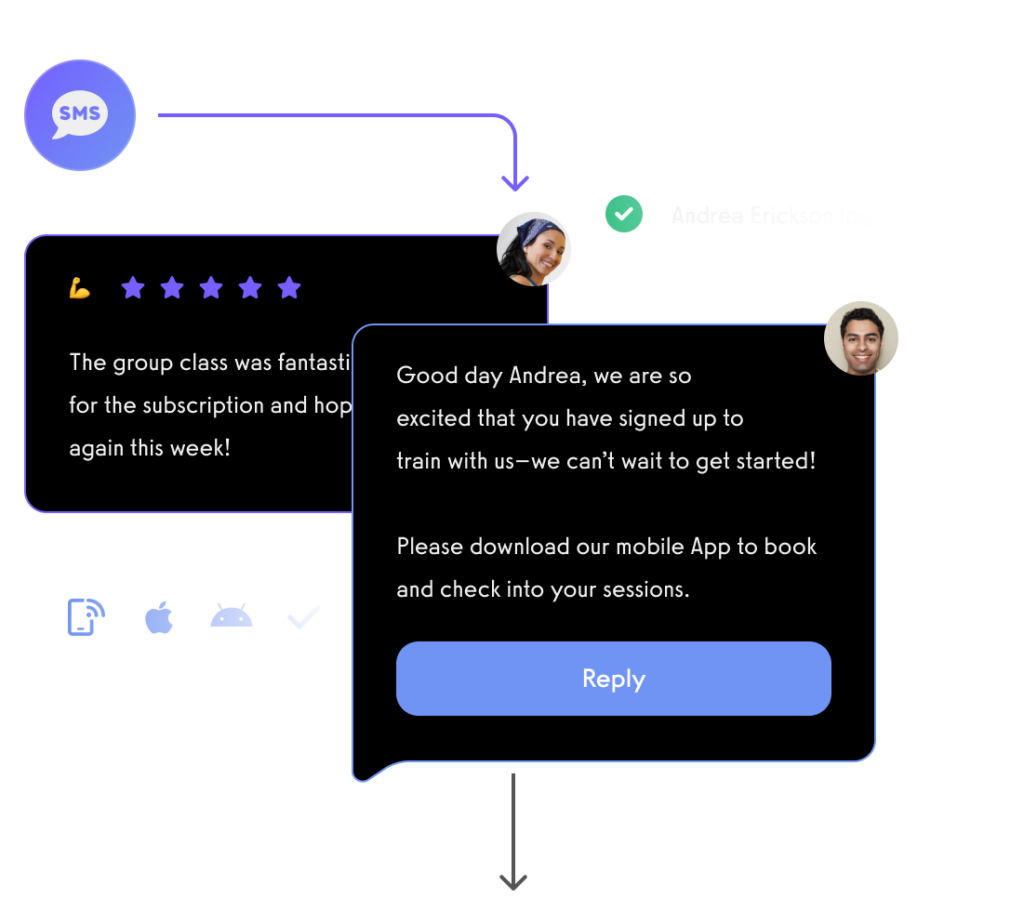
View performance over time, track personal records, and other fitness stats with performance reporting dashboards.
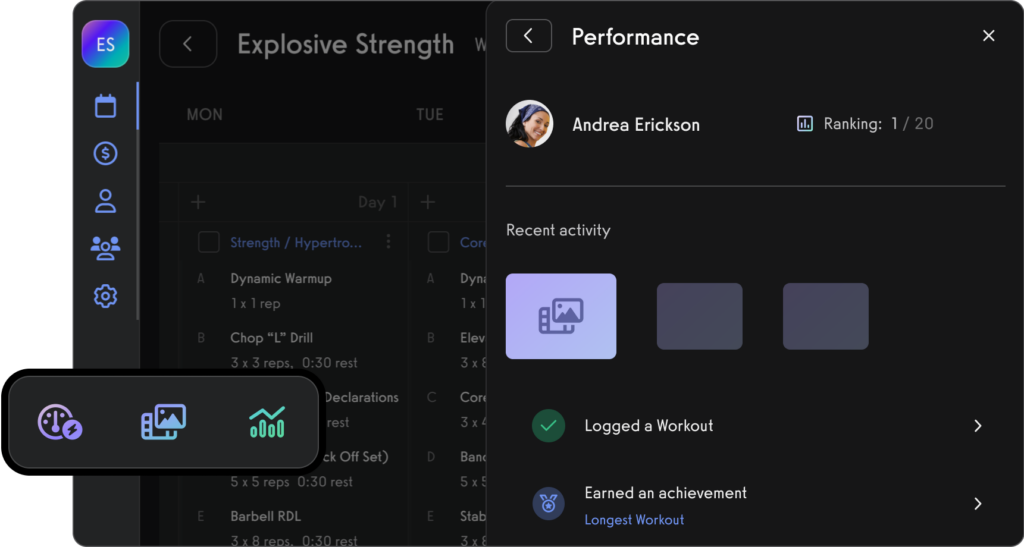
And of course, view all of your fitness business reports easily too.

All from your custom-branded fitness apps (Read More: Best Gym Mobile Fitness Apps Software)

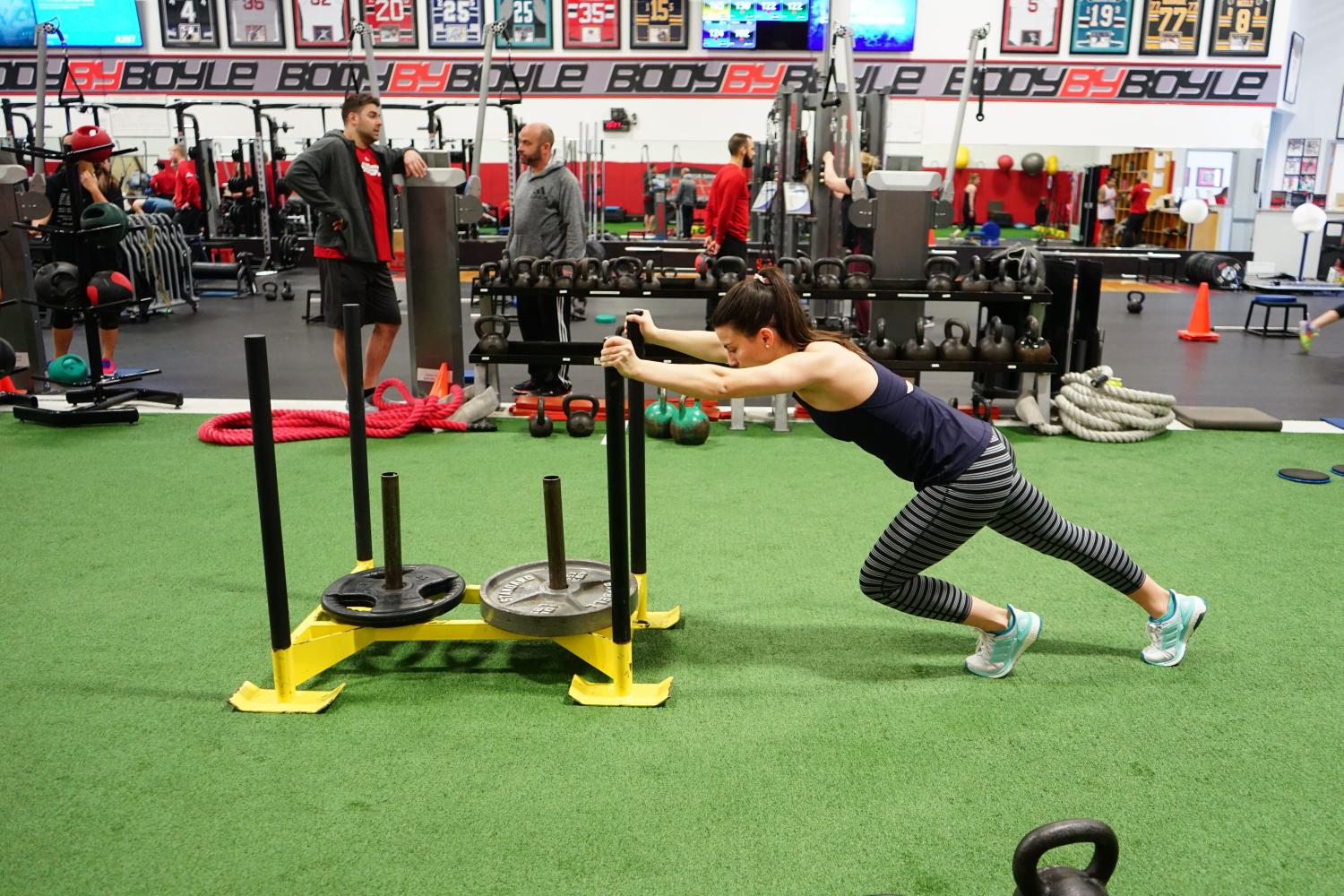
Want to learn how your fitness business can take it to the next level? Get a demo now!









